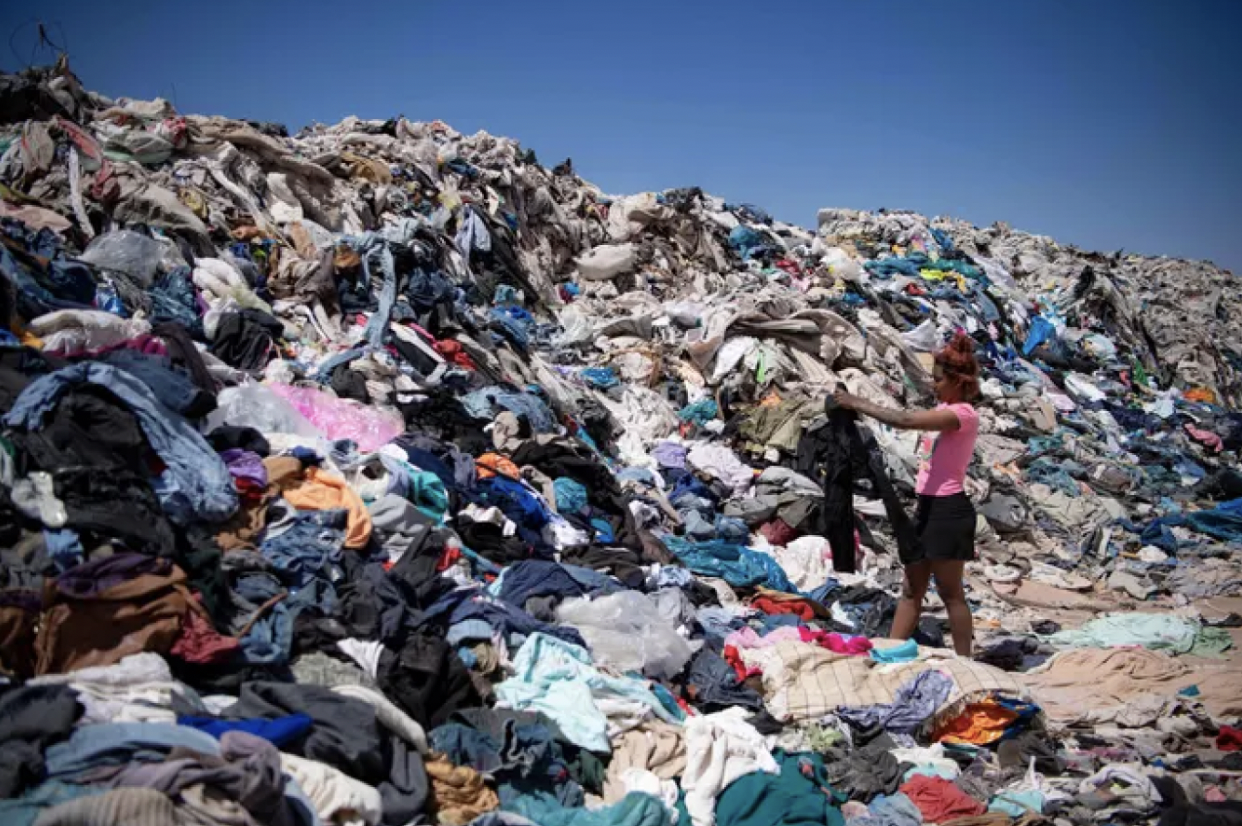Why Shein Haulers Should Opt for Depop Instead
Affordable and ethical, what more could you ask for in the search for trendy clothes?
Chances are if you have TikTok you’ve landed across at least one or two haul videos (videos where people showcase their purchases) on your for you page. If you’ve seen a haul video or two, there’s a strong chance you’ve seen one of the infamous #SheinHaul videos. With over 6.9 million videos to the hashtag, many creators on the platform purchase boxes of clothes well worth over a few hundred dollars from Shein and showcase their new finds. Some complain about the quality of the clothing but often proclaim that it was well worth it since they’re able to get a multitude of pieces for a rather cheap price.
These videos have influenced countless app users to purchase from Shein and similar fast fashion stores like Romwe and Zaful. Although the clothing is trendy and cute, the effects mass purchasing has on factory workers and the environment are detrimental. It’s time to ditch the hauls.
If you need some motivation, here are some reasons to help you break the habit:
Environmental Effects
Courtesy of Exhibit A.
The impact overconsumption has on the environment is something people should take into consideration before hitting the buy button on their shopping carts. These haul videos caused a lot of viewers on the app to prefer having countless pieces available to them at all times, valuing quantity over quality. The emergence of microtrends also caused countless consumers to want to keep up with trends at all times and purchase new clothes whenever new ones pop up. This is now so frequent that people are purchasing clothes from these stores weekly and they can because of how cheap it is.
When people purchase mass amounts of clothing, most don’t actually end up getting worn and either end up going to landfills or being donated to thrift stores. 92 million tons of fast fashion end up in landfills every year and take over 200 years to break down in the environment. Almost 84% of clothing that ends up in thrift stores never reaches the shelves to get sold. These clothes have to be burnt, which emits dangerous toxins into the atmosphere and harms the environment even more.
Poor Labor Conditions
Courtesy of KnowESG.
SheIn has been known for having horrendous working conditions for garment workers in the factories that produce their products. Workers often have to work 18-hour days and are expected to make hundreds of garments a day at an extremely rapid pace. Additionally, the conditions the workers are in often cause them to be exposed to toxic chemicals.
Due to horrible work conditions and mass production, fast fashion giants like Shein can keep pieces on the site as low as $5-10 per item. Some shoppers swear by Shein because of the low prices, but many secondhand apps that don’t rely on the same negative work conditions have equally cheap pieces that are both trendy and ethical.
If you're convinced but still want to get cute clothes with a cheap price tag, fear not. I have more sustainable solutions.
The Solution: Depop
Secondhand apps like Depop, Poshmark, and Vinted all have reasonably low prices. You can filter the price in settings on the app so you only see items within whatever price range you desire. There is also a tool that allows purchasers to make an offer if they believe the price is too high.
Shopping secondhand will expose you to clothes from all decades (especially vintage) but you can still find newer trendier finds if that’s your taste. If the price tag is a bit higher than fast fashion brands just remember these are pieces you can carry in your wardrobe for years to come. Since most pieces from secondhand apps will outlast poorly made fast fashion clothes, shoppers will have to spend less purchasing new clothes in the long run. The clothes I’ve purchased from secondhand apps years ago are all still going strong today.
Not only is shopping secondhand good for the environment, but it also forces you to think more about whether or not you truly like a piece. This can help shoppers develop their own personal style. On fast fashion sites, shoppers are instantly hit with all of the biggest microtrends of the time but on secondhand apps, you have to do some digging before you find pieces you like. It can be time-consuming but the process is fun! Finding pieces you fall in love with is exciting, especially if it’s for a good deal. It can also expose you to a multitude of new trends and aesthetics that you might just happen to fall in love with. I’ve found some of my favorite pieces on Depop and I’m sure you will too! I know a smile comes to my face every time I come across a unique find for under $15.
Over time, the more you continue to use Depop, the more the app will understand your general aesthetic and the types of clothes you gravitate more toward. The app landing page has a “suggested for you” tab that pulls pieces based off of your purchases and likes. This feature can help shoppers with less time find cute pieces with ease.
Courtesy of Medium.
Although Shein is one of the largest contributors to the growing consumption of fast fashion, we should continue to be critical of other fast fashion brands as well that are contributing to mass overconsumption. Next time you pop open TikTok and see trendy new pieces from a haul, consider looking not only at apps like Depop, but also Poshmark and Vinted. Ditch the fast fashion sites and check out these links instead:
Happy shopping!
Featured image courtesy of Bloomberg.



